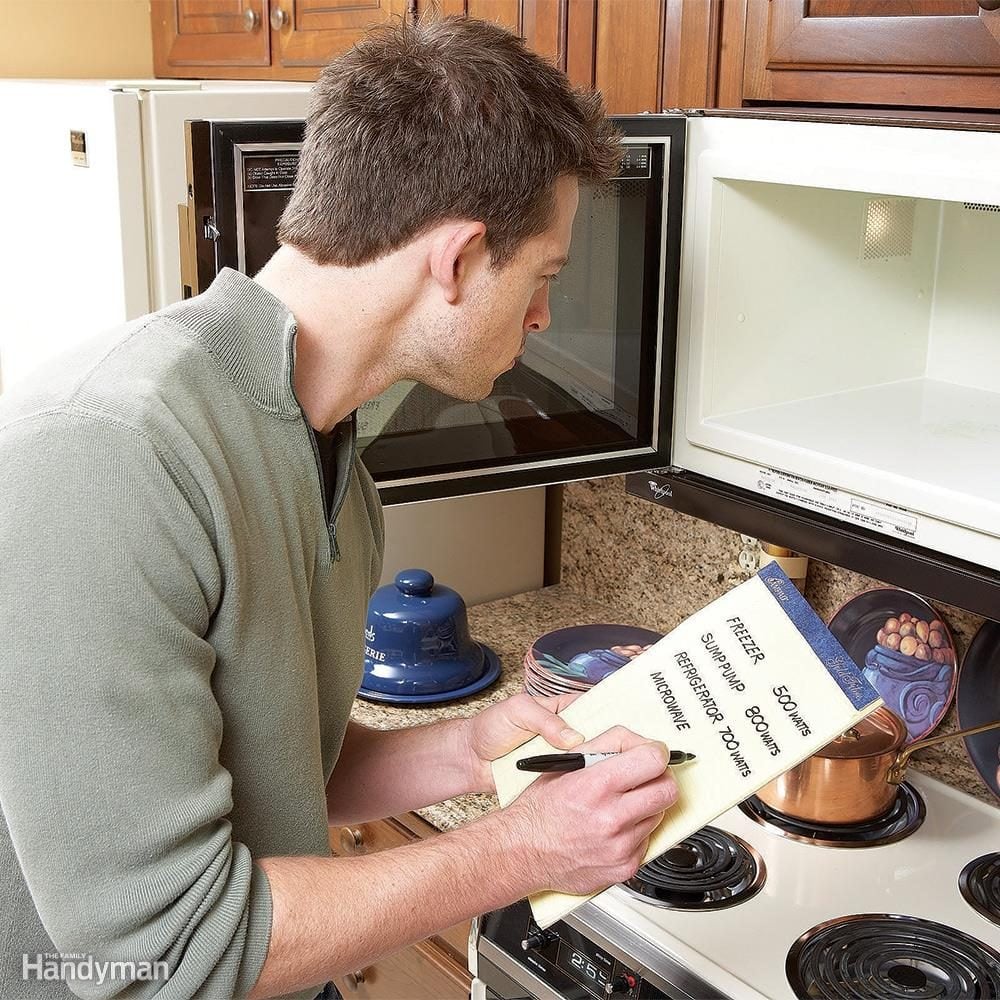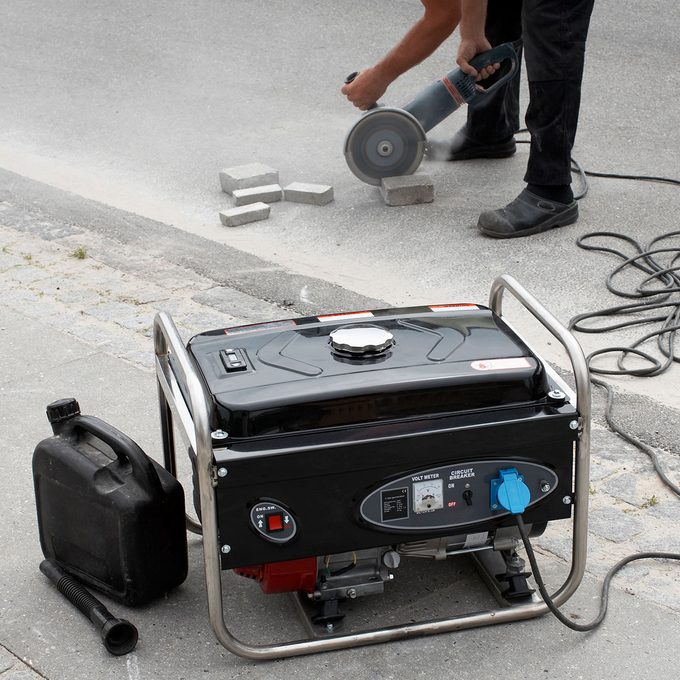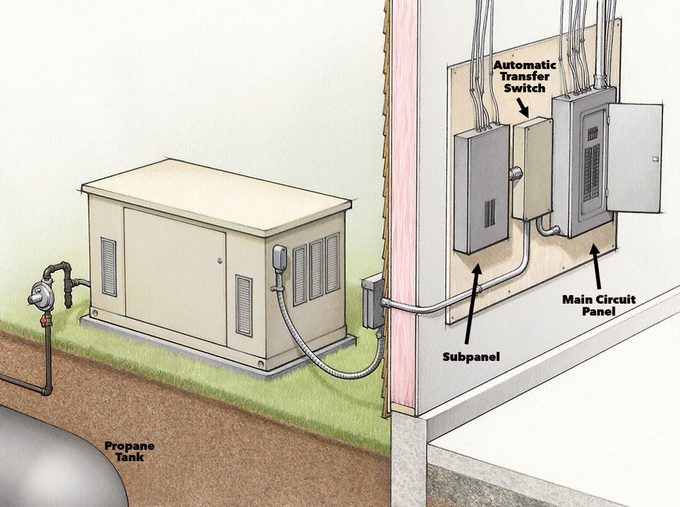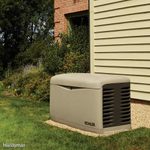A Guide to Choosing the Right Backup Generator for Your Home
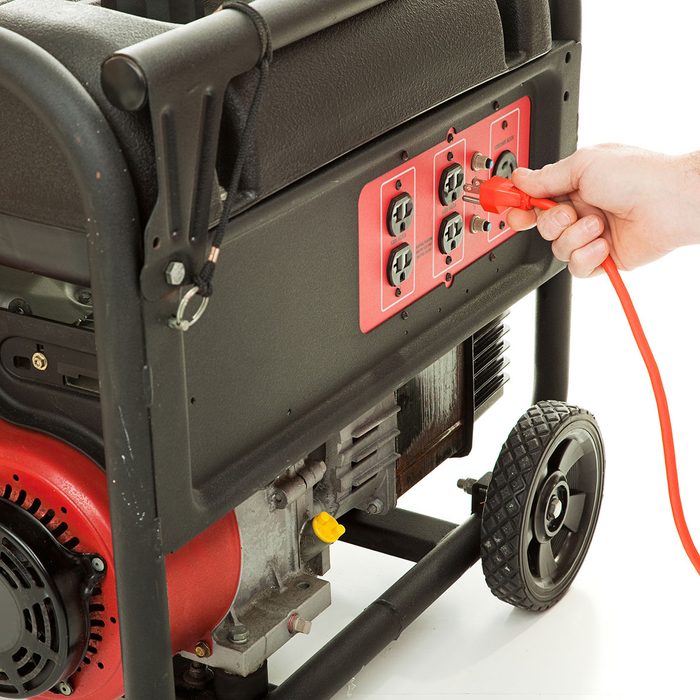
Choose a backup power system before the next blackout hits.
It’s not unusual to lose electricity. Things happen, and the power goes out. However, if that happens during a winter storm, or some other circumstance where it’s more than an inconvenience, you need to be prepared, and one way to do that is to have an emergency generator.
There are two kinds of generators: home backup generators and smaller, portable generators, that you’re probably familiar with already. The later category is great for powering the essentials, like the refrigerator or a space heater, while large standby power generators can power pretty much everything in your house.
Here, we’ll walk you through both types of generators (portable and standby) and other ways to deliver backup power (extension cords and subpanels). We’ll cover the pros and cons of each system and give you an idea of the price ranges for the best generators on the market.
On This Page
Two Types of Generators, Two Different Costs
Portable Generators
When the power goes out, you have to start up a gas-powered portable generator and plug it into your appliances or a subpanel. Portable generators cost $500 to $1,500 depending on power output.
Standby Generators
These generators are powered by natural gas or propane and start automatically during power outages. Standby generator prices start at $5,000 for a 7,000-watt unit, including installation.
What Size Generator Do You Need?
Your first step in adding backup power is deciding what you need (or want) to keep running when the electricity goes out. This determines the size (wattage) of the generator you’ll need.
Walk through each room in your house and make a list of everything you want to power during an outage. Look for a label on each appliance (they have to have one) that contains information such as wattage, model number, and the year it was made. Some labels are right inside the door on appliances; others are on the back, so you have to pull the appliance away from the wall. Write down the item and how much wattage it uses. Be sure to include essential items, like refrigerators, freezers, a well pump if you have one, and a sump pump. You can go a few hours or even days without an oven (use the microwave instead) and an air conditioner—they use a lot of power and would require you to buy a much bigger generator.
Add together the items’ wattages, then multiply that number by 1.5 (appliances need the extra power to start up). That’s the minimum wattage needed for your generator.
Wattage Requirements
- Microwave: 600 to 1,200 watts
- Refrigerator: 700 to 1,200 watts
- Freezer: 500 to 1,200 watts
- Washing machine: 1,200 watts
- 1/3-hp sump pump: 800 watts
- Television: 300 watts
- Laptop computer: 250 watts
- 10,000-Btu air conditioner: 1,500 watts
Plug-in Generators
A Portable Generator
A portable backup generator with extension cords is the simplest and least expensive backup power system. Keep the generator at least 10 ft. from your house to avoid carbon monoxide poisoning.
A Twist-Lock Extension Cord
Use a heavy-duty, twist-lock extension cord to plug into the inlet that’s connected to your subpanel. The special ends keep the cord from pulling loose. Some generators come with a twist-lock cord.
The most basic method of supplying backup power is running a portable generator in your yard, then plugging in extension cords that plug into your appliances. It’s also the least expensive solution since you don’t need to hire an electrician to install a subpanel. The downside is you have to run extension cords everywhere you want power and you’re limited to how many things you can plug in at once (most generators have either two or four outlets). You also have to start and maintain the generator.
When the power goes out, place the generator on a flat surface outside, at least 10 ft. from the house. Don’t set it under awnings, canopies or carports, or inside the house or garage. It’s absolutely critical that you keep the generator away from your house and especially away from doors and windows—your life could depend on it! More people die from carbon monoxide poisoning from the gas engines on generators than from the disasters causing the power outages.
Caution: Plug in a carbon monoxide detector when using a portable generator. It’ll alert you if the generator exhaust reaches a dangerous level inside the house.
Extension cords must be at least 14 gauge to carry adequate power. Follow the cord’s maximum wattage rating (listed on the cord’s label). Start up the generator, then plug in the extension cords (photo above). Be careful not to overload the generator by plugging in high-wattage appliances that you didn’t plan for. It’ll trip the breaker or blow a fuse on the generator, or damage the appliance motors.
Portable backup generators can range in price from $500 for a 3,250-watt unit to $1,500 for a 10,000-watt unit. Options include wheels (get them—generators are very heavy to lift) and electric (key) starts rather than pull-starts. Consider how long the generator can run on a tank of gas. Some run just a few hours, so you’ll have to get up in the middle of the night to add fuel. Others have 16-gallon fuel tanks that can run up to 10 hours.
A Manual Transfer Switch Panel Makes Portable Power More Convenient
To use a portable generator without the hassle of running extension cords, hire an electrician to install a manual transfer switch subpanel off your main circuit panel and install a dedicated inlet to power the subpanel (installing the subpanel is complex; not a DIY project). This setup gives you the advantage of powering entire circuits in the house, not just individual appliances. The drawback is you still have to start and maintain the gas-powered generator. And unless you buy a large generator (they’re available with more than 15,000 watts), you’re still limited in what you can power.
Before calling an electrician to add the subpanel, choose what you want to power during an outage. It’s worth including a circuit that’ll let you run your TV, computer and a lamp, especially if you lose power for days at a time, so you can keep everyone entertained. Plus, these electronic devices don’t require a lot of wattage. The circuits you want powered will be moved from your main circuit panel to your subpanel, so they’ll run when you have normal power and when you lose electricity and hook up the generator. Expect to pay $200 for materials and at least $500 for an electrician to install the subpanel and special inlet.
During a power outage, run a cord from the backup generator to the inlet, flip a manual transfer switch on the subpanel, and all the designated circuits will have power. Choose a heavy-duty extension cord (photo above left) with twist-lock ends (generators have receptacles for these ends) that stay in place once they’re plugged into the generator and inlet. Be sure to keep the generator at least 10 ft. from the house.
Don’t attach a second male end to a power cord, then run it from the generator to a wall outlet to power a circuit (yes, people have done this). This may seem like a clever way to run power through your home’s wiring system, but the electricity will run back through the circuit breaker panel and out to the utility lines, which can kill service personnel working on the lines, even if they’re miles away.
Standby Generators
Standby generators automatically turn on when the power goes out—you don’t have to do a thing. This is the best option if you frequently lose electricity and want to keep all or most of your appliances running. Most standby generators are powerful enough to run a central air conditioner, kitchen appliances, and other large items simultaneously. They’re also quieter than portable generators and you don’t need to worry about running cords or storing gasoline. The drawback is the price. You’ll need to have the generator, transfer switch, and subpanel professionally installed.
A transfer switch constantly monitors power. If you lose electricity, it starts the generator automatically—even if you’re not home. When power is restored, the transfer switch shuts off the generator.
Standby generators connect to your home’s fuel supply (natural gas or propane). If you don’t already have one of these fuel lines coming into the house, install a propane tank.
Standby generators range from $5,000 for a 7,000-watt unit to more than $15,000 for a 30,000-watt unit (installation included). Home centers carry a limited selection of portable generators (but usually no standby units). Larger sizes and standby units are usually available through special order or from the manufacturer.
Standby Backup Generator System
Standby generators run off your home’s natural gas supply or a propane tank, which can be underground. The transfer switch automatically starts the generator, which powers the circuits in the subpanel.
